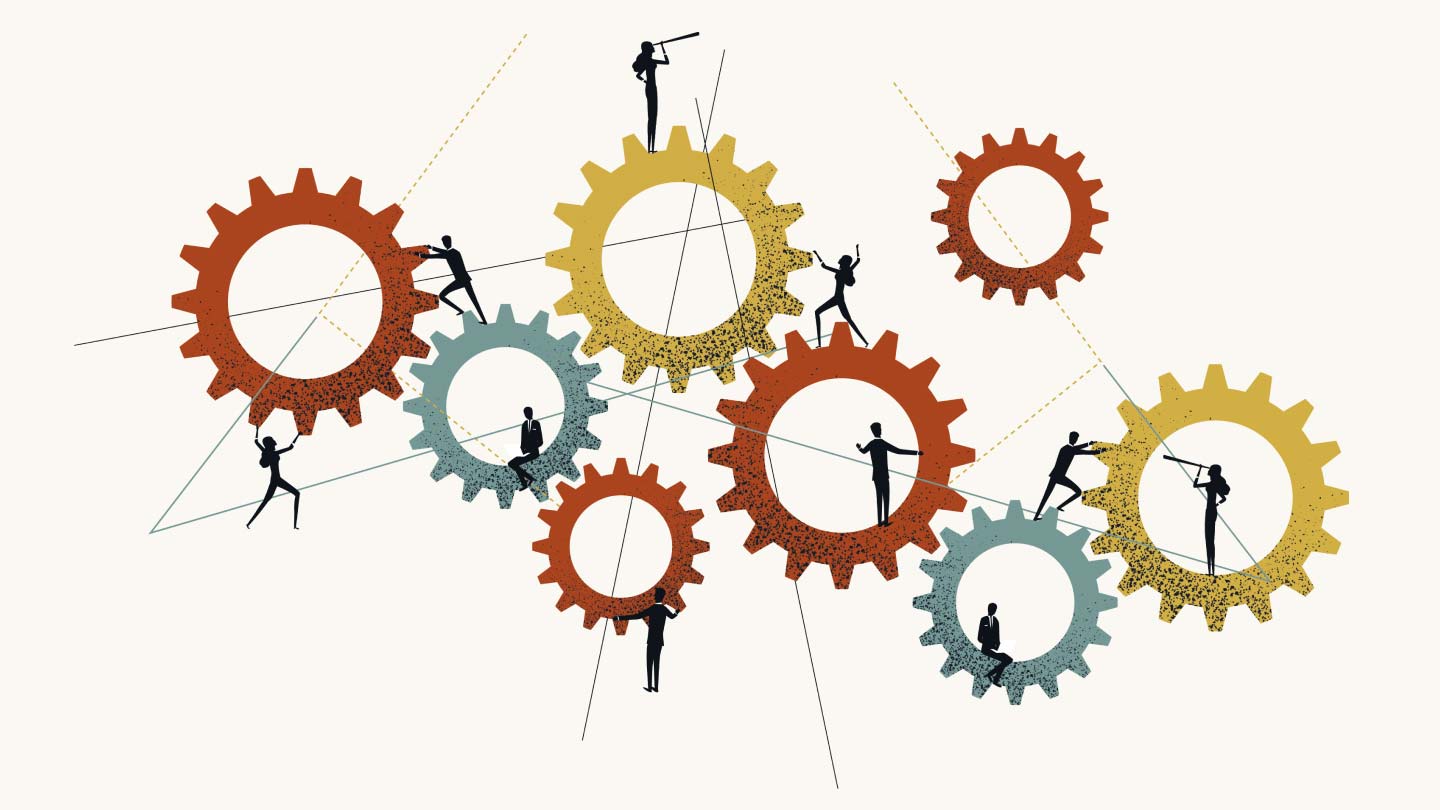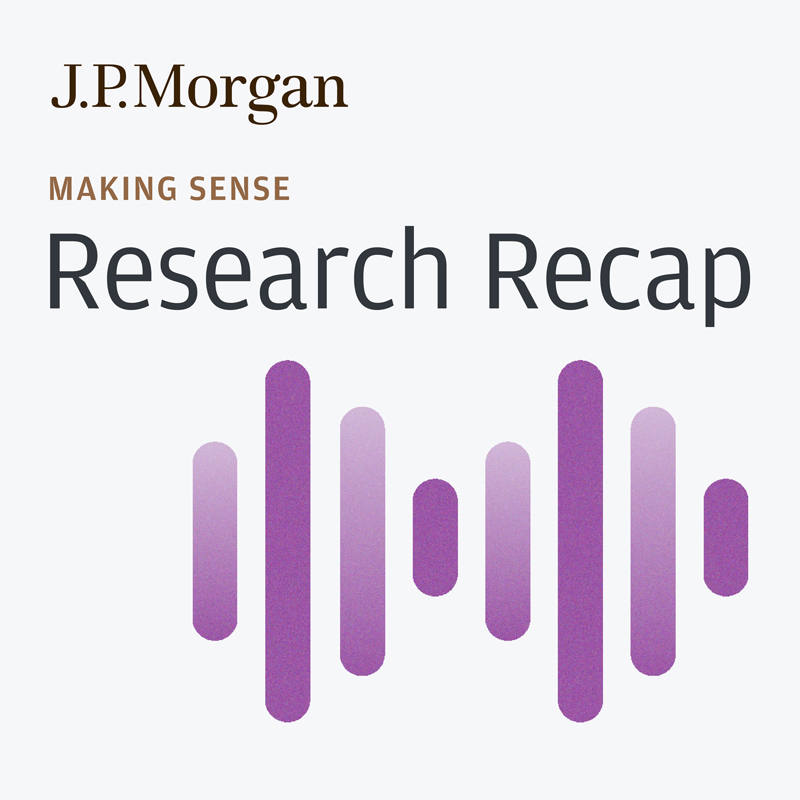
Key takeaways
- The labor market is tight, but it could be easing off according to Michael Feroli, J.P. Morgan’s Chief U.S. Economist.
- Growing immigration is leading to an increased potential workforce, as well as upping the pace of jobs growth.
- The recovery of labor force participation has been a welcome economic surprise, and people with disabilities have been central to this recovery.
- The female labor force participation rate has more than fully recovered following the COVID-19 pandemic and the gender pay gap has declined to a new low of 16.4% in the U.S.
Why is the US labor market so tight?
“Jobs growth has generally been stronger than everyone was expecting, and productivity has been strong over the last year,” said Michael Feroli, J.P. Morgan’s Chief U.S. Economist. A tight labor market — characterized by low unemployment and few available workers to fill jobs — has been the U.S. default since 2023.
Various factors are keeping the workforce resilient despite rising unemployment levels in February, including increasing immigration, sector-specific hiring and more people with disabilities entering the workforce.
The US workforce: What’s the current state of the labor market?
The labor market is tight, but it could be easing off slightly according to Feroli. “The labor market is now becoming less tight — not by a lot, though,” he said.
The unemployment rate rose in February after a 54-year low of 3.4% was reached in 2023, though it edged back down to 3.8% in March. “The generally acknowledged ‘normal’ level is around 4%,” said Feroli. “If the unemployment rate doesn’t dip again, we’re getting closer to an equilibrium where unemployment levels are quite low, but not unsustainable. This should help to keep inflation in balance. Wage growth has also moderated slightly, though it is still a little hotter than the Federal Open Market Committee’s (FOMC’s) typical comfort zone.”
What does this mean for the wider economy? “Rising unemployment and easing wage inflation should make the FOMC a little more confident that the labor market is moving back into balance, even though that movement is only slight,” said Feroli. “J.P. Morgan Research predicts the Fed’s first rate cut will come in July. However, the continued strength in job growth has led us to revisit our view that growth will step down materially in the second quarter of 2024, and we are revising up our outlook for annualized real GDP growth next quarter from 0.5% to 1.5%.”
This points to some disconnect between predicted rate cuts, the economy and the labor market. “Historically, when the Fed cuts rates, it is usually because the economy is weakening,” added Feroli. “The current situation is more complex as the economy and the labor market are standing strong, but inflation looks less worrisome. Some of the committee would probably be more comfortable cutting if they thought the labor market needed some support, but as things stand, we think the Fed will go ahead with a cut even while the labor market is still doing well.”
March jobs report underscores labor market tightness

In the latest episode of J.P. Morgan's jobs report podcast, Mike Feroli, Chief U.S. Economist and Phoebe White, Head of U.S. Inflation Strategy, discuss the key takeaways.
Listen to the latest episode of J.P. Morgan's jobs report podcast.
The labor market by sector
The increase in private employment has been led by health care and social assistance. “The health care and government sectors are very strong right now,” said Feroli. The construction sector is also showing surprising strength — when the Fed hikes rates significantly, construction employment often falls off, but this hasn’t been the case so far this year. There are a few areas of weakness, including manufacturing. But overall, this is not detracting from a strong labor market.”
The rise of health care employment
The effects of immigration on the US labor market
According to a variety of estimates, U.S. immigration has surged in the last two to three years. The most immediate implication is an increase in the potential workforce, as well as a higher pace of jobs growth. “Normal additions to the workforce because of population growth are something like 100,000 per month,” said Feroli. “Yet we’ve been adding 200,000 plus jobs a month, with the unemployment rate climbing. How can that be? Part of it is that demographics are changing and there is a bigger potential workforce.”
“More immigrants means more labor supply and more consumer demand… It’s possible that we could have a situation where employment growth is strong but labor markets are looser.”

Michael Feroli
Chief U.S. economist, J.P. Morgan
The jump in immigration helps resolve several of the puzzles about the macroeconomy over the past few years, particularly in relation to the labor market. As well as supporting such strong jobs growth, it has also underpinned unusually strong homebuilding and lifted state and local government spending. Looking ahead, the implications of immigration are ambiguous and will also depend on the outcome of the upcoming U.S. election. “More immigrants means more labor supply and more consumer demand,” said Feroli. “The inflation implications are ambiguous at this stage, though. It’s also possible that we could have a situation where employment growth is strong but labor markets are looser. The number of immigrants entering the workforce is difficult to estimate accurately, so the sustainable level of employment growth to account for new workforce entrants could be far higher than anticipated. We will be watching the effects of immigration on the labor market very closely.”
Population growth in the US
People with disabilities are significantly boosting the workforce
The recovery of labor force participation has been a welcome economic surprise, and people with disabilities have been central to this recovery. People with disabilities account for almost one-third of labor force growth over the last three years, even though they only account for 11-12% of the adult population in the U.S.
What’s behind the growth? Contributing factors include:
-
Labor market tightness: In an environment where jobseekers are scarcer than job openings, this may have given people with disabilities more opportunities to be hired into the workforce.
-
An increase in people self-classifying as having a disability: Since 2021 the number has modestly increased. This could be linked to so-called ‘long COVID’ disabilities.
-
More telework opportunities: An increase in telework opportunities may have marginally contributed to the increase in participation. 24.5% of workers with disabilities teleworked last month versus 22.8% of those without disabilities.
Labor force participation rates: People with and without disabilities
Other factors may also have driven change including policy updates, therapeutic interventions and structural changes in work arrangements. However, the tightness of the labor market is likely to have had the biggest impact. “The sharp improvement over the last few years likely owes to the high-pressure labor market,” said Feroli. “In this case, demand created its own supply, and prospects for increased participation hinge on prospects for expansion. Further improvement in participation rates for people with disabilities could yield huge dividends.”
Female labor force participation
“Women have made some of the biggest strides in years. More women are working than ever before, reversing the historic setbacks from the pandemic. However, gender balance is far from parity.”

Joyce Chang
Chair of Global Research, J.P. Morgan
Global female labor force participation rates are hitting record highs of 46%, but this is still far below the male rate of 72%. In the U.S., the female labor force participation rate has more than fully recovered following the COVID-19 pandemic — when it fell to a 33-year low — and the gender pay gap has declined to a new low of 16.4%. Women are working more flexibly, with 41% working from home on an average workday in 2022, up from 25% in 2017-18. The female unemployment rate in the U.S. has dropped to 3.1% compared with 3.9% for men.
The gender pay gap in the US
Progress continues for women on boards, with a record 33.5% of board seats occupied by women in S&P 500 companies. Only 0.2% of Russell 3000 companies in the U.S. had no women on their boards in 2023. However, women only represent 9% of CEOs in the S&P 100 and progress looks to be stalling. “The pace of progress is slowing despite record numbers,” said Amy Ho from J.P. Morgan’s Strategic Research team. “At the current rate, parity on U.S. boards would not be reached until 2032, while C-suite parity may not occur until 2050.”
“While this is a positive story in many ways, there is still work to be done to achieve true gender equity in the workforce,” said Joyce Chang, Chair of Global Research. “The pay gap between men and women has decreased, but women are still underrepresented in the highest-paying fields. We’ve moved on from the “she-cession”, but progress is still incomplete.”
Related insights
-

Global Research
Cocoa prices are finally falling. Why?
August 05, 2025
Why are cocoa prices coming down after the global shortage, and how will this impact the chocolate industry? Find out.
-

Global Research
What to know about alternative investments in 2025
June 16, 2025
Will private equity and private credit continue to lag their public market counterparts? And what’s the outlook for hedge funds and commercial real estate?
-

Global Research
How will the US - China trade agreement impact China’s economy?
May 20, 2025
What is China’s growth outlook, how will it be impacted by the recent U.S.–China trade deal and what are some of the potential policy responses?
This communication is provided for information purposes only. Please read J.P. Morgan research reports related to its contents for more information, including important disclosures. JPMorgan Chase & Co. or its affiliates and/or subsidiaries (collectively, J.P. Morgan) normally make a market and trade as principal in securities, other financial products and other asset classes that may be discussed in this communication.
This communication has been prepared based upon information, including market prices, data and other information, from sources believed to be reliable, but J.P. Morgan does not warrant its completeness or accuracy except with respect to any disclosures relative to J.P. Morgan and/or its affiliates and an analyst's involvement with any company (or security, other financial product or other asset class) that may be the subject of this communication. Any opinions and estimates constitute our judgment as of the date of this material and are subject to change without notice. Past performance is not indicative of future results. This communication is not intended as an offer or solicitation for the purchase or sale of any financial instrument. J.P. Morgan Research does not provide individually tailored investment advice. Any opinions and recommendations herein do not take into account individual client circumstances, objectives, or needs and are not intended as recommendations of particular securities, financial instruments or strategies to particular clients. You must make your own independent decisions regarding any securities, financial instruments or strategies mentioned or related to the information herein. Periodic updates may be provided on companies, issuers or industries based on specific developments or announcements, market conditions or any other publicly available information. However, J.P. Morgan may be restricted from updating information contained in this communication for regulatory or other reasons. Clients should contact analysts and execute transactions through a J.P. Morgan subsidiary or affiliate in their home jurisdiction unless governing law permits otherwise.
This communication may not be redistributed or retransmitted, in whole or in part, or in any form or manner, without the express written consent of J.P. Morgan. Any unauthorized use or disclosure is prohibited. Receipt and review of this information constitutes your agreement not to redistribute or retransmit the contents and information contained in this communication without first obtaining express permission from an authorized officer of J.P. Morgan.